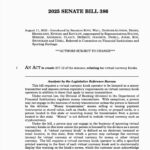Polkadot Native Algorithmic Stablecoin Proposal Gains Support
The Polkadot ecosystem is assessing the creation of a native algorithmic stablecoin, exclusively backed by the Polkadot (DOT) token. This proposal, which would introduce the pUSD stablecoin, has garnered significant early backing from the community, according to reporting via Cointelegraph.
Background on the pUSD Stablecoin Proposal
The initiative was introduced by Bryan Chen, co-founder and chief technology officer of Polkadot’s Acala blockchain, on Sunday. The key goal is to develop pUSD as an algorithmic stablecoin using the Honzon decentralized stablecoin protocol. The pUSD would be overcollateralized and only backed by DOT tokens, aiming to reduce reliance on established stablecoins like Tether’s USDT and Circle’s USDC.
The proposal argues that “Polkadot Hub should have a native DOT-backed stablecoin because people need it and otherwise we will haemorrhage benefits, liquidity and/or security”. The system’s design involves smart contracts and economic incentives to keep the stablecoin pegged to a fiat currency. Additionally, an optional savings module would let pUSD holders earn interest by locking their tokens and collecting stability fees.
Early Voting and Community Response
As of the current tally, more than three-quarters of the votes support the Polkadot native algorithmic stablecoin proposal. Over $5.6 million worth of DOT (representing more than 1.4 million DOT tokens at about $3.90 per DOT) has already been used in the voting process. The voting remains open for over 24 days, and the scale of participation highlights the significance of the proposal to the Polkadot ecosystem.
The plan aims to make the Polkadot network more robust and independent by introducing a decentralized, on-chain, and collateral-based stablecoin instead of relying on centralized stablecoins. This model seeks to provide a more permissionless and less controllable approach compared to stablecoins backed by custodial assets.
Market Reaction and Context
Algorithmic stablecoins drew increasing scrutiny following the collapse of Terra’s UST stablecoin in 2022, which caused major disruptions in the cryptocurrency sector. Despite these setbacks, algorithmic stablecoins like the proposed Polkadot native stablecoin continue to generate attention, mostly because of their emphasis on decentralization.
The decentralized structure of such stablecoins can theoretically contribute to financial systems that are more resistant to censorship and regulation. However, crypto industry figures such as Ki Young Ju, CEO of CryptoQuant, caution that algorithmic stablecoins could also lead to “dark stablecoins” that bypass existing regulations.
What’s Next for the Proposal?
With more than three weeks of voting remaining, the Polkadot community will continue to consider the risks and benefits of launching pUSD. If passed, the stablecoin would represent a move toward stronger ecosystem independence for Polkadot by limiting reliance on third-party stablecoins.
Learn more about ongoing developments in the cryptocurrency sector at Vizi Cryptocurrency.



















